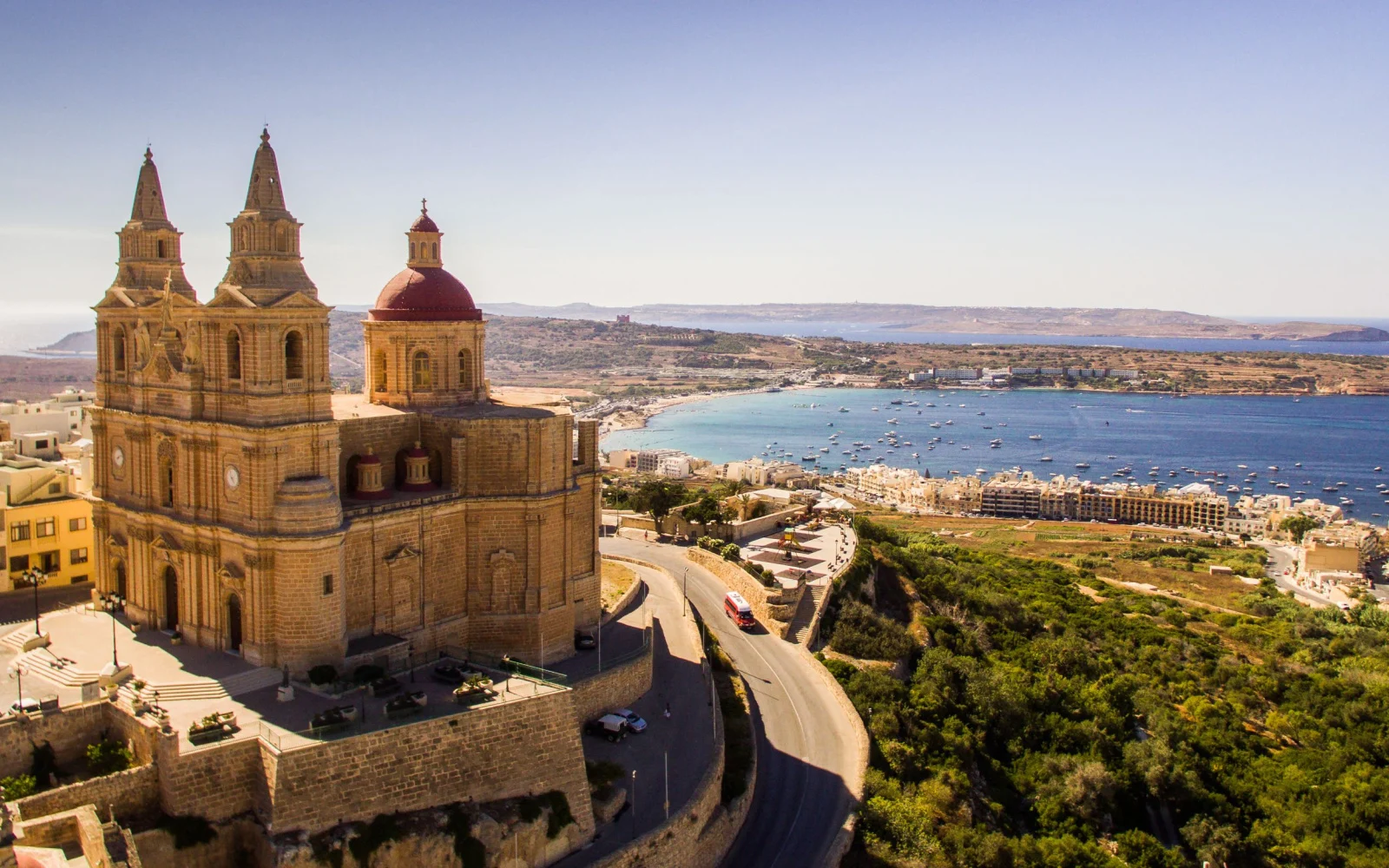What's the best time to visit Malta?
The best time to visit Malta is during the sunny summer months of June to August, perfect for swimming and outdoor adventures. Shoulder seasons like April to May and September to October offer budget-friendly options with pleasant weather.
However, if you prefer fewer crowds and can tolerate cooler temperatures, consider a visit during the quieter winter months from December to February.
Are you looking to experience one of Europe’s hidden gems? Look no further than the tiny island country of Malta! With a resident population of only half a million and an area of only 122 square miles, Malta is the world’s tenth smallest country.
Just because it’s small doesn’t mean it’s not exciting. There are plenty of things to do, but when’s the best time to visit Malta?
Well, that really depends on your personal preferences and what you want to experience during your trip. We’ll show you the best time to visit according to your goals for the trip; let us be your guide!
The Overall Best Time to Visit Malta
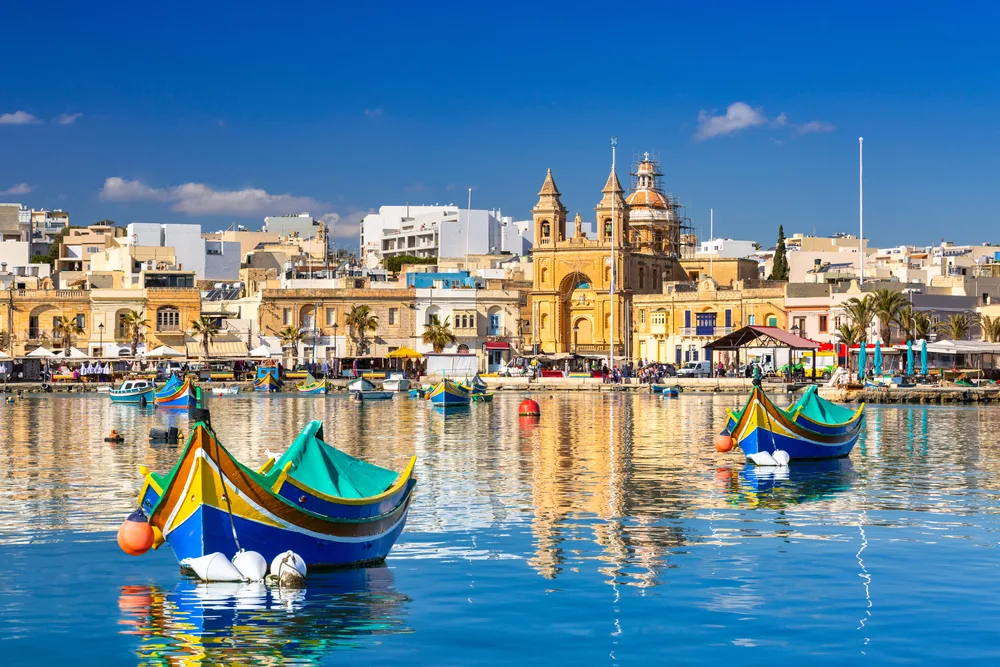
Patryk Kosmider/Shutterstock
The overall best time to visit Malta is during the summer months of June, July, or August. During the summer, temperatures in Malta hit their peaks, averaging between 70ºF and 80ºF (21ºC to 26ºC).
Temperatures can swell to 90ºF (32ºC). That’s perfect for spending a lazy day on the beach! Depending on the temperature, summer is ideal for getting out and enjoying the beautiful natural scenery every region offers.
On the island of Malta alone, there are more than a dozen places to hike. After that, you can explore some of the smaller islands. Malta also has some of the best diving and snorkeling in all of Europe.
Malta has everything from calm snorkel excursions in St. Peter’s Pool or more complex dives in areas like the Blue Lagoon. Malta has a diverse ecosystem right below the waves for you to discover!
Alternatively, you can visit in the spring or fall when temperatures are milder. These are the best times to visit Malta if you don’t care about the beach. That way, you can enjoy the outdoors without the heat.
No matter the weather, Malta can give you a glimpse into the historic nature of the island. You can visit neolithic ruins from 5,000 years ago, a crusaders’ castle, the stunning Verdala Palace, or any of the countless museums.
Ready to Book?
Unlock Exclusive Discounts on Expedia.com!
Got Travel Insurance?
Protect yourself for unexpected interruptions.
Compare Plans We may be compensated when you book after clicking on one of our links.Cheapest Time to Visit Malta
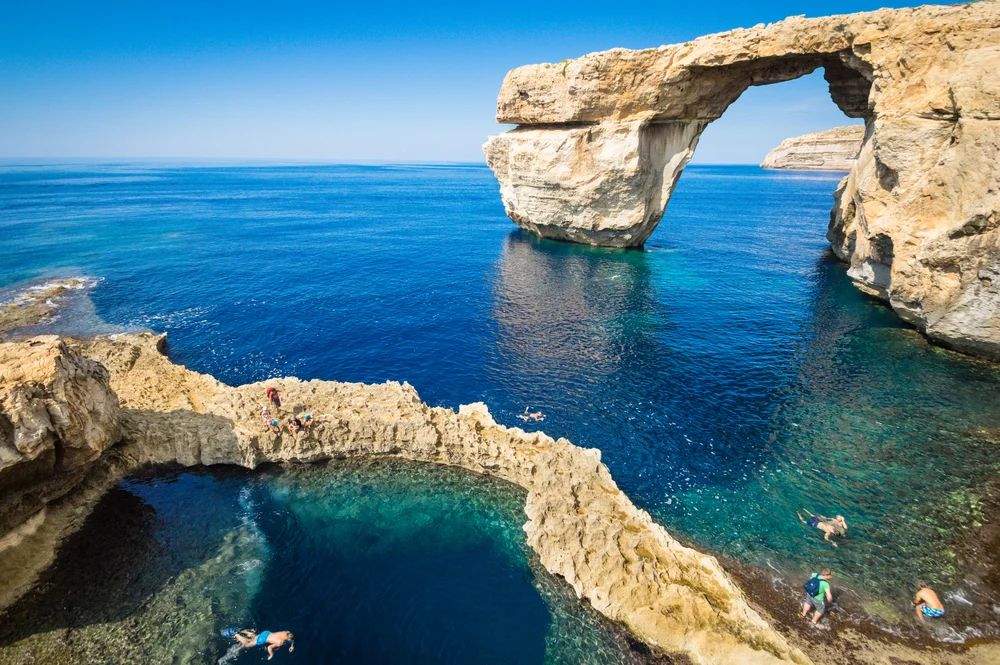
View Apart/Shutterstock
The cheapest time to visit Malta while avoiding the unpleasant weather in winter is from April to May or September to October.
These months will give you the perfect combination of cheap flights, good deals on accommodations, and pleasant weather. Temperatures in the spring range from 55ºF to 75ºF (14ºC to 23ºC), while the fall is between 65ºF and 78ºF (18ºC to 25ºC).
These temperatures are perfect for enjoying the countless outdoor activities in Malta. From mid-May until the end of September, you can rent sailboats or charter a boat to sail around the Maltese archipelago.
Depending on the chartered boat’s route, you can even depart the ship for a cave tour in a smaller boat. If you decide to pop over to the smaller island of Gozo, located less than 12 miles west of Malta, you can take Jeep tours around the sparsely populated island.
On the island, you can swim around the Azure Window, see 350-year-old salt pans, the Gozo Citadel, or check out the beautiful Ta Cenc cliffs. In the fall and spring, flights to Malta are 50% cheaper on average.
Accommodations can also be cheaper, but it depends on which type you prefer. Airbnbs have the steepest price decline—in the fall and spring, these prices are up to 40% lower than during peak travel season.
Least Busy Time to Visit Malta
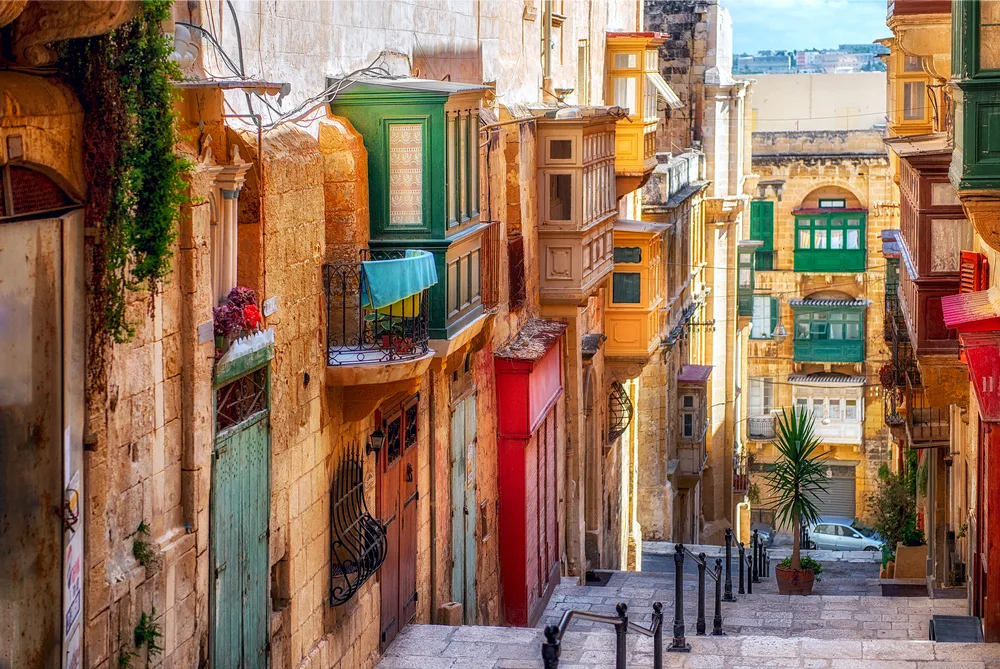
liseykina/Shutterstock
The least busy time to visit Malta is during the winter months of December to February. This is when fewer tourists are arriving due to chillier temperatures.
Since Malta is a Mediterranean country, its tourism industry relies on people seeking out its stunning beaches. But during the winter, temperatures can get as low as 50ºF (10ºC), so swimming is out of the question for most.
With beaches a no-go, most tourists tend to avoid the winter months. Even though temperatures are lower, there’s still plenty of sunshine. Malta gets more than 300 days of sun each year! Depending on what you want for your trip to Malta, winter might be the best time for you.
With a lack of tourists, there’s more opportunity to enjoy the islands’ natural beauty. And you also don’t have to wait as long or get interrupted by others!
During the winter, attractions like the National War Museum, National Museum of Archeology, St. Paul’s Cathedral, and many others have significantly fewer tourists. That means you can take your time to enjoy the amazing sights without being rushed out by the crowds!
Winter is also the ideal time to travel around the islands by public transit. Public transit ticket prices reduce by 25% in the winter. It makes getting around the island and planning your trip one step easier.
Worst Time to Visit Malta
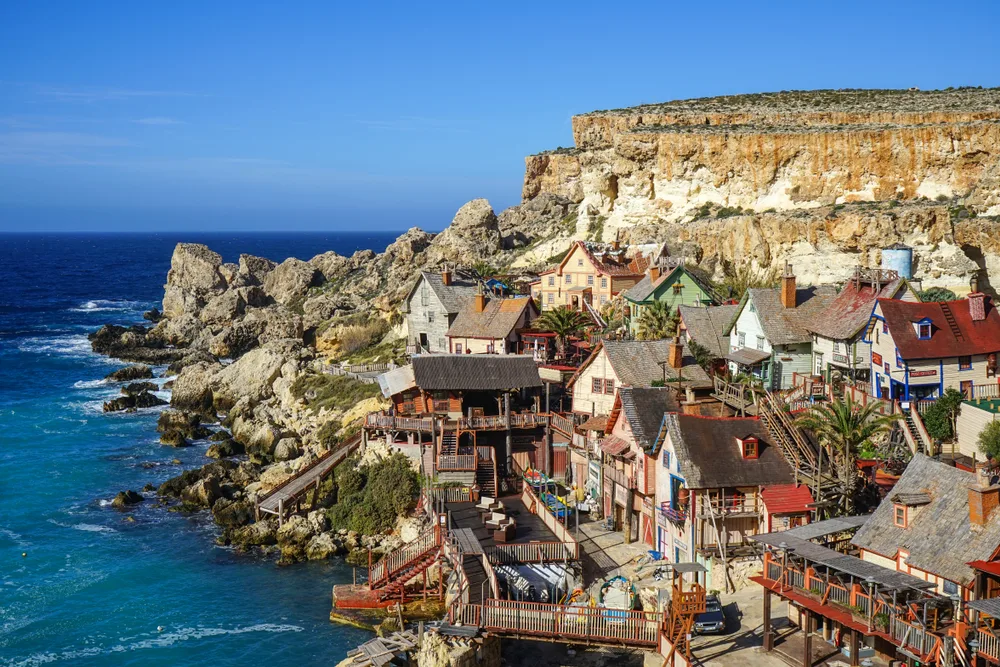
The famous Popeye Village in Mellieha on a winter day. The beautiful Island of Malta on January 22, 2017/Abel Halasz/Shutterstock
The worst time to visit Malta is in the winter, from December to February. While there are benefits to visiting during this time, winter significantly limits what you can do during your trip.
When you travel to Malta any other time of year, you can swim any time you like. Even if you’re brave enough to swim in colder weather, sometimes the conditions aren’t safe. Winter brings the biggest wind storms of the year to Malta, which can make waves too large to swim.
Not only that, but the wind can make certain scenic spots too dangerous for travel. For example, strong winds can make visiting the Ta Cenc cliffs too dangerous, while waves can make traveling to the famous Blue Lagoon by boat impossible.
During the winter, many restaurants and hotels that open for the tourist season close down. It doesn’t make the other accommodations more expensive, but it limits your options.
If you’re someone that likes to enjoy the best restaurants, you’re better off choosing the summer. If you’re on a budget, the worst time to visit Malta isn’t winter – it’s during peak season in June, July, and August.
For many reasons, these are the best months to travel to Malta. But for those who need to pinch their pennies, it isn’t the best choice.
Hotels and Airbnbs hit their peak prices during the summer, which makes it difficult to find a place to stay for cheap. Flights are at their most expensive and public transit is also more expensive during the summer.
Malta by Month: Climate & Activities
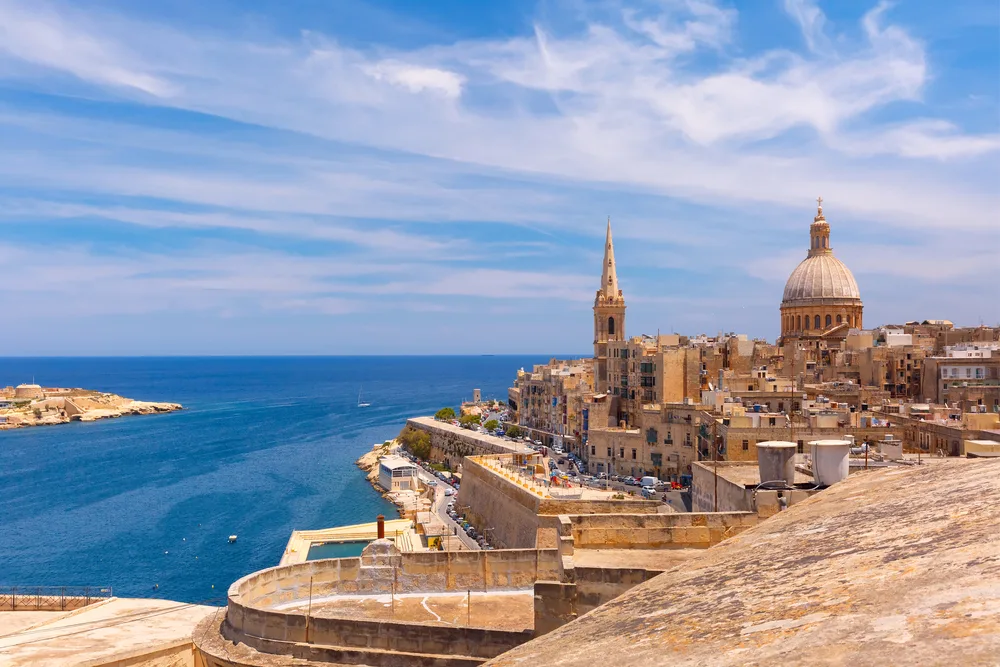
kavalenkava/Shutterstock
Still unsure about the best time to visit Malta? Take a look at our summary of the weather and climate by month below:
January
Winter temperatures in Malta range from 10 to 16°C (50-61°F). January is ideal for exploring the historic capital, Valletta, visiting the ancient city of Mdina, and enjoying cultural events such as the Malta International Arts Festival.
February
Similar to January, February maintains cool temperatures. Explore the megalithic temples of Hagar Qim and Mnajdra, attend the Malta Carnival for colorful celebrations, and take scenic walks along the coastline.
March
As spring begins in February, Malta’s temperatures range from 11 to 17°C (52-63°F). March is perfect for hiking in the Dingli Cliffs, visiting the Blue Grotto, and experiencing the Malta International Choir Festival.
April
Spring temperatures in April range from 12 to 18°C (54-64°F). It’s an ideal time for exploring the historic Three Cities, taking a boat trip to the island of Gozo, and attending the International Fireworks Festival.
May
May sees temperatures ranging from 15 to 22°C (59-72°F). Explore the meandering streets of Valletta, visit the medieval town of Birgu, and enjoy the Malta International Food Festival.
June
Summer arrives with temperatures between 18 to 26°C (64-79°F). June offers opportunities for swimming and sunbathing on the beaches, exploring the fortified city of Senglea, and attending the Malta Arts Festival.
July
July maintains warm temperatures from 21 to 30°C (70-86°F). It’s a popular month for water activities, such as diving and snorkeling, visiting the St. John’s Co-Cathedral in Valletta, and enjoying the nightlife in Paceville.
August
Temperatures in August range from 23 to 31°C (73-88°F). While it can be hot, August is perfect for boat trips to the Blue Lagoon and exploring the medieval city of Mdina.
September
As fall begins, temperatures range from 21 to 29°C (70-84°F). September offers a pleasant transition, with opportunities for visiting the Hypogeum in Paola, exploring the fishing village of Marsaxlokk, and attending the Malta Mediterranean Literature Festival.
October
October sees temperatures ranging from 18 to 25°C (64-77°F). It’s a great month for hiking in the Gozo countryside, exploring the ancient Ggantija Temples, and attending the Notte Bianca cultural festival in Valletta.
November
Fall temperatures range from 15 to 21°C (59-70°F). November is ideal for exploring the historic sites of Rabat, visiting the Popeye Village, and enjoying the Malta Jazz Festival.
December
In December, winter returns to Malta with temperatures ranging from 12 to 18°C (54-64°F). December brings opportunities for holiday festivities in Valletta, exploring the Christmas markets, and enjoying the festive decorations around the island. Consider visiting the medieval Palazzo Falson Historic House Museum in Mdina.
Frequently Asked Questions
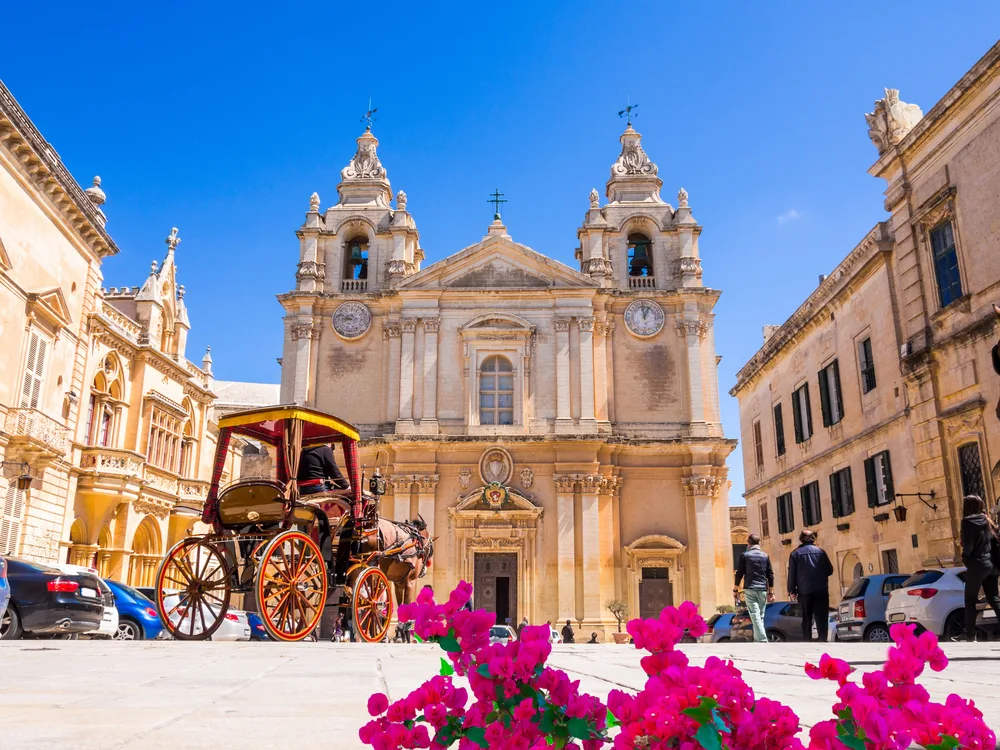
Cristian M Balate/Shutterstock
Still wondering a few things about the best time to visit Malta? No worries — we’ve got you covered.
Is there a rainy season in Malta?
Malta gets the most rain in winter from November until February. In the summer, Malta has less than one rainy day a month, while December can have as many as 15 rainy days.
How many days in Malta is enough?
It all depends on what you want to experience, but most people get to see all the sights within a week. If you visit for a week, you have enough time to visit the capital, travel around the island, visit snorkeling spots, and more!
What month is the hottest in Malta?
July is the hottest month in Malta on average. Temperatures can reach 95ºF (35ºC), but the average is usually between 75ºF and 86ºF (23ºC to 30ºC).
Although Malta is cooler than places like Greece and southern Spain, these temperatures can still feel scorching due to the dry climate.
Is Malta cheap to visit?
Malta is firmly in the middle when it comes to the price of European vacations. Malta is more expensive than places like Spain, Portugal, and Greece, but significantly cheaper than France or Italy.
Expect to spend between 60 and 100 Euros per person, per day when you visit Malta. It may be more expensive during the peak summer season.
What are the negatives of Malta?
Malta is a picturesque island that doesn't have too many downsides, but there are few.
In the summer, the beaches get crowded quickly. The roads in Valletta and other cities are narrow, so be careful when you drive. Those streets can make traffic a nightmare.
Is Malta similar to Sicily?
Although Malta and Sicily are Mediterranean islands, they couldn't be more different. Sicily is more than 81 times the size of Malta and Sicily has a population 10 times higher than Malta.
Malta was also influenced by many cultures, such as the Greeks, North Africans, the French, Italians, and the British. Sicily, on the other hand, is a very Italian-Influenced place. They both love their seafood, though!
So, What’s the Best Time to Visit Malta?
If you want to enjoy the stunning setting and beautiful beaches, summer from June to August is the best time to visit Malta. If you want milder weather so you can enjoy hiking and other outdoor activities, fall or spring is the best time to visit Malta.
To keep to a tight trip budget, April to May and September to October are lower-priced shoulder seasons in Malta. The weather is mild during these spring and fall months, making everything a bit more comfortable!
Winter can be great if you want to avoid the crowds, but it’s also one of the worst times to go with chillier temperatures and fewer activities.
Malta is one of those fascinating, scenic countries you can truly visit anytime of year and have a wonderful trip. Keeping our tips in mind will further guarantee that your Malta vacation is one to remember!



